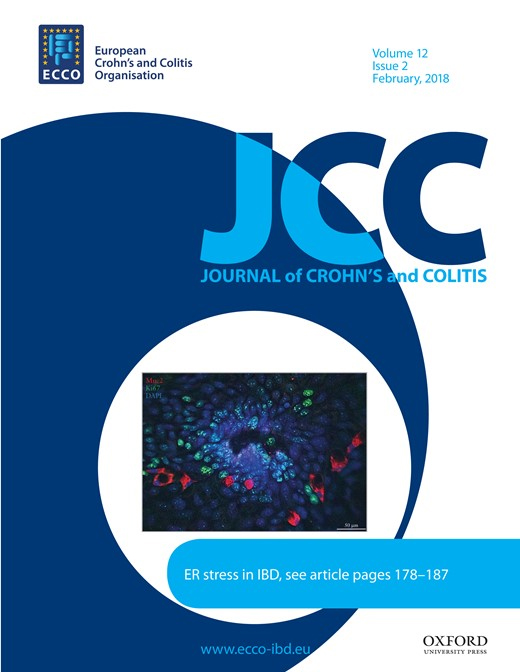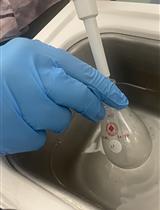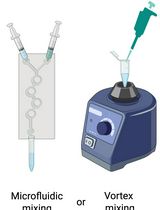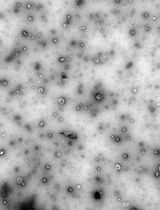- EN - English
- CN - 中文
Preparation, Characterization, and Cell Uptake of PLGA/PLA-PEG-FA Nanoparticles
PLGA/PLA-PEG-FA 纳米颗粒的制备、表征和细胞摄取
发布: 2022年04月05日第12卷第7期 DOI: 10.21769/BioProtoc.4373 浏览次数: 3556
评审: Pilar Villacampa AlcubierreTanxi CaiPRASHANT SHARMA
Abstract
Oral administration of colon-targeting nanoformulations holds many advantages over the systemic delivery of free drugs, or traditional nontargeting formulations in the treatment of ulcerative colitis (UC). Currently, the most conventional method for constructing colon-targeting drug delivery systems (DDS) is by integrating the biocompatible materials poly(lactic-co-glycolic acid) (PLGA) and polylactic acid (PLA) into a copolymer. This PLGA/PLA-polyethylene glycol-folic acid (PEG-FA) copolymeric nanoformulation effectively delivers the drugs for uptake by various human colon cancer cells (e.g., HT-29 and HCT-116) and mouse colon cancer cells (CT-26). There is, however, a distinct lack of comprehensive protocols for the construction of such copolymer. This protocol details an easy-to-follow single-step method for the construction of a colon-targeting PLGA/PLA-PEG-FA nanoformulation, which encapsulates a fluorescent dye and demonstrates the visualization of its cell uptake in vitro.
Keywords: Anti-inflammatory (Anti-inflammatory)Background
Ulcerative colitis (UC) is a chronic inflammatory bowel disease (IBD) with a mounting incidence in the United States (Yang et al., 2020). Traditional anti-inflammatory drugs, including 5-aminosalicylic acid (5-ASA), corticosteroids, and thiopurines, are frequently used to treat mild-to-moderate UC (Tripathi and Feuerstein, 2019). However, these treatments yield inevitable side effects. Contrarily, UC-targeting formulations, especially colon-targeting nano-drug delivery systems, are designed to enhance colonic drug concentration, while reducing systemic drug distribution, effectively enhancing the drug’s efficacy and reducing side effects.
Compared with other nanomaterials, FDA-approved poly(lactic-co-glycolic acid) (PLGA), polylactic acid (PLA), and Polycaprolactone (PCL) polymers are low-toxic, biodegradable, and can load both hydrophobic and hydrophilic drugs (Sindeeva et al., 2021). These materials have also proven easy to co-polymerize and form complex nanoparticles. Recently, many laboratories, ours included, have shown that PLGA/PLA copolymer composed nanoparticles are colon-targeting and biocompatible (Zhao et al., 2013; Zhang et al., 2018). Additionally, we co-polymerized PLGA nanoparticles with PLA-polyethylene glycol-folic acid (PEG-FA) (a PLA-PEG polymer with folic acid modification), enhancing the targeting ability towards folic acid receptors on intestinal epithelial cells. Subsequent reassembling of PLGA/PLA-PEG-FA nanoparticles into a hydrogel further improves their colon-targeting efficiency (Zhang et al., 2018). In this protocol, we will demonstrate the use of PLGA and PLA-PEG-FA as starting materials to make PLGA/PLA-PEG-FA copolymer nanoparticles. The uptake of these nanoparticles into epithelial cells would then be visualized by the incorporation of the fluorescent dye, Dil (dioctadecyl-tetramethylindocarbocyanine perchlorate). The nanoparticles prepared in this protocol have demonstrated their effectiveness in treating UC in recent research (Zhang et al., 2018).
Materials and Reagents
Pipettes, 0.5–10 μL, 10–100 μL and 100–1,000 μL (Eppendorf, catalog number: 13-684-251)
Pipette tips, 0.1–10 μL, 1–300 μL, and 200–1,000 μL (Fisher Scientific, SureOneTM micropoint pipette tips, catalog numbers: 02-707-441, 02-707-410, 02-707-407)
Eppendorf Safe-Lock Tubes, 1.5 mL (Eppendorf, catalog number: 022363204)
Falcom 15 mL and 50 mL conical centrifuge tubes (Fisher Scientific, catalog numbers: 05-527-90, 14-959-49A)
KimTech Science KimWipes (Kimberly-Clark, catalog number: 06-666)
Vacuum Filter (Millipore, catalog number: SCGVU01RE)
Mica sheet (Electron Microscopy Sciences, catalog number: 71856-01-10)
Malvern zeta potential capillary cell & plastic cap (Malvern, catalog number: DTS 1070)
Falcon 8-well cell culture slides (Corning, catalog number: 354108, 354118)
VWR micro cover glass (VWR, catalog number: 48382-138)
Nail polish (Electron Microscopy Sciences, catalog number: 72180)
MEDI-FIRST lens cleaner towelettes (Safetec of America, catalog number: 81586)
Countess cell counting chamber slides (Thermo Fisher Scientific, catalog number: C10283)
Polyvinyl alcohol (PVA, 87–90% hydrolyzed; Sigma-Aldrich, catalog number: P8136-250G)
Lactide:glycolide (75:25) (PLGA), molecular weight (MW) 66000–107000 (Sigma-Aldrich, catalog number: P1941-5g)
PLA-PEG (PEG MW 5000 and PLA MW 10000) (NSP-Functional polymers and copolymers, catalog number: DL-5k-10k)
PLA-PEG-FA (PEG MW 5000 and PLA MW 10000) (NSP-Functional polymers and copolymers, catalog number: 11440-10k-5000)
Phosphate-buffered Saline (PBS, Corning, catalog number: 21-040-CV)
1,1'-Dioctadecyl-3,3,3',3'-Tetramethylindocarbocyanine Perchlorate (Dil, Thermofisher, catalog number: D282)
Methyl alcohol (Sigma-Aldrich, catalog number: 67-56-1)
Acetone (EMD, catalog number: AX0115P-1)
Dichloromethane (Sigma-Aldrich, catalog number: 32222-1L)
HEPES buffer pH 7.4 (Sigma-Aldrich, catalog number: F7876)
Spectrophotometer cuvettes, polystyrene (Sigma-Aldrich, catalog number: C5677-100EA)
RPMI 1640 cell culture medium (Corning, catalog number: 10-040-CV)
Fetal Bovine Serum (Atlanta Biologics, catalog number: S11150H)
StemPro Accutase Cell dissociation reagent (Life Technologies, catalog number: A11105-01)
Penicillin Streptomycin solution (Life Technologies, catalog number: 15070-063)
Trypan Blue stain 0.4% (Life Technology, catalog number: T10282)
Phalloidin, Fluorescein Isothiocyanate (FITC) Labeled (Sigma-Aldrich, P5282-.1MG)
DAPI (SouthernBiotech, catalog number: 0100-20)
Complete medium (see Recipes)
FITC staining solution (see Recipes)
Equipment
Milli-Q water purification system (Millipore-Sigma, model: advantage A10)
Electronic balance (OHAUS, model: explorer125)
Vortexer (Scientific Industries, model: 200-SI0236)
Digital Probe Sonifier (Branson, model: 450 Digital Sonifier)
Benchmark Hotplate and Magnetic Stirrer (Corning, model: PC-6200)
Rotary evaporator (Buchi, model: R-210)
Vacuum pump (Buchi, model: V-700)
Centrifuge (Thermo Fisher Scientific, model: Sorvalis ST16R)
Ultracentrifuge (Beckman Coulter, model: Optima L-90K)
Ultrasonicate cleaner (Branson, model: 3510R-MTH)
Zetasizer (Malvern, model: Nano-ZS90)
Atomic force microscopy (Nanosurf, model: CoreAFM)
Cell culture incubator (Thermofisher Scientific, model: Series II water jacket)
Cell counter (Life Technology, model: Countess 3)
Olympus fluorescence microscope (Olympus, model: BX63 with DP-25 camera)
Keyence microscope (Keyence, model: BZ-X700 Series)
Procedure
文章信息
版权信息
© 2022 The Authors; exclusive licensee Bio-protocol LLC.
如何引用
Yang, H., Sung, J., Alghoul, Z. and Merlin, D. (2022). Preparation, Characterization, and Cell Uptake of PLGA/PLA-PEG-FA Nanoparticles. Bio-protocol 12(7): e4373. DOI: 10.21769/BioProtoc.4373.
分类
医学
生物工程 > 生物医学工程 > 药物递送
您对这篇实验方法有问题吗?
在此处发布您的问题,我们将邀请本文作者来回答。同时,我们会将您的问题发布到Bio-protocol Exchange,以便寻求社区成员的帮助。
Share
Bluesky
X
Copy link













